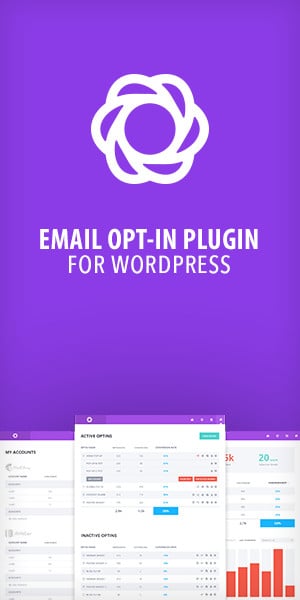Organic SEO practices for 2025 are vital for any business looking to strengthen its online presence. Statistics show that companies focusing on robust organic SEO strategies experience a 60% boost in website traffic, underscoring its importance. This post will delve into the top 10 best practices for organic SEO, from optimizing on-page elements to leveraging high-quality backlinks. By adopting these strategies, businesses can improve search engine rankings, increase visibility, and enhance user engagement. Dive into these essential practices to stay ahead in the competitive digital landscape and ensure long-term success.
Proven Techniques for Keyword Research in 2025
In the dynamic world of SEO, keyword research remains a cornerstone of online success. As we move into 2025, understanding and adapting to new techniques is crucial. This section will delve into the latest methods that can give you an edge in keyword research. Whether it’s leveraging AI tools or analyzing competitors, these strategies will enhance your visibility and relevance.
How to Use AI Tools for Keyword Analysis
AI tools are revolutionizing keyword analysis. They offer insights that were unimaginable just a few years ago. These tools simplify the process by providing data-driven recommendations. This helps marketers identify not just keywords, but the user intent behind them. AI-powered platforms like SEMrush and Ahrefs use machine learning to analyze search trends and predict emerging keywords. This predictive capability is invaluable for staying ahead in the competitive SEO game.
Here’s how you can harness AI tools for keyword analysis:
- Identify User Intent: AI tools analyze search queries to determine what users genuinely seek.
- Predict Trends: Predictive analytics help you focus on keywords that will gain traction.
- Competitive Analysis: AI can quickly assess competitors’ keyword strategies, providing insights for your improvement.
Utilizing AI tools allows for a sophisticated approach to keyword research, saving time and improving accuracy.
Long-Tail Keywords: Increasing Visibility and Relevance
Long-tail keywords might seem less attractive due to lower search volumes, but they are goldmines for relevance and conversion rates. In 2025, focusing on these keywords can significantly enhance your SEO strategy. They help capture niche markets and are more aligned with specific user intent, which is essential for driving qualified traffic.
Consider these benefits of using long-tail keywords:
- Higher Conversion Rates: Users searching for long-tail keywords often have a clear intent to purchase or engage.
- Reduced Competition: There’s often less competition, making it easier to achieve higher rankings.
- Improved Relevance: These keywords make your content more relevant to specific user queries.
Incorporating long-tail keywords into your content strategy can lead to increased visibility and better engagement.
Competitor Analysis for Better Keyword Strategy
Understanding your competitors’ keyword strategies can provide a strategic advantage. Analyzing the keywords they rank for can reveal gaps and opportunities for your own strategy. This analysis helps you identify keywords with potential that your competitors might overlook.
Effective competitor analysis involves:
- Identifying Competitors: Use tools like Ahrefs to discover who your real competitors are in the search results.
- Analyzing Backlinks: Study their backlink profiles to understand their link-building strategies.
- Keyword Gap Analysis: Identify keywords your competitors rank for that you don’t, and vice versa.
Leveraging these insights can refine your keyword strategy, ensuring it is robust and competitive.
On-Page Optimization Strategies for Higher Rankings
On-page optimization is crucial for improving search engine rankings. This involves refining elements on your webpage to align with search intent and enhance user experience. This section explores effective strategies to optimize your content, meta tags, and URLs for better visibility in search results.
Content Optimization for Search Intent Fulfillment
Content optimization goes beyond keyword placement. It’s about understanding and fulfilling search intent. Users need answers to their queries, and delivering this through high-quality content is key to engagement and ranking.
To optimize content for search intent:
- Identify Intent Types: Determine if the intent is informational, navigational, or transactional.
- Focus on User Experience: Create content that is easily accessible and answers questions effectively.
- Use Visuals: Integrate images and videos to enrich the content and improve understanding.
Meeting user needs by aligning your content with their intent creates a valuable resource that search engines will favor.
Effective Meta Tag Use for Enhanced Click-Through Rates
Meta tags play a crucial role in attracting users to your site. They serve as a preview of your content in search results, influencing click-through rates. Crafting compelling meta descriptions and titles can significantly boost engagement.
Keys to effective meta tag use include:
- Descriptive Titles: Use concise and descriptive titles that incorporate relevant keywords.
- Engaging Descriptions: Write meta descriptions that are informative and call users to action.
- Keyword Integration: Seamlessly integrate keywords without stuffing.
Well-crafted meta tags can enhance your visibility in search results, leading to higher traffic.
Structuring URLs for SEO Success
URL structure is often overlooked, yet it is a fundamental aspect of SEO. Well-structured URLs improve user experience and search engine understanding. They should be simple, descriptive, and keyword-rich to convey the page’s content effectively.
Best practices for URL structuring include:
- Keep it Simple: Short and clear URLs are easier to read and share.
- Use Keywords: Incorporate relevant keywords to signal the topic to search engines.
- Avoid Special Characters: Use hyphens instead of underscores or spaces for readability.
Optimizing URL structure enhances your website’s SEO and contributes to a better user experience.
Technical SEO Tips for Maximizing Organic Traffic
Technical SEO ensures your website is accessible and efficient for both users and search engines. It involves optimizing various technical aspects to improve site performance and search engine rankings. This section covers strategies to enhance site speed, adopt mobile-first indexing, and implement schema markup.
Enhancing Site Speed to Boost User Experience
Site speed is a critical factor in SEO and user satisfaction. Slow-loading websites lead to higher bounce rates, impacting rankings negatively. Enhancing site speed improves user experience and can lead to increased engagement and conversions.
Ways to improve site speed include:
- Optimize Images: Compress and resize images to reduce load times.
- Enable Caching: Use browser caching to store static files for faster access.
- Minimize Code: Reduce CSS, JavaScript, and HTML to make the site more lightweight.
A faster site not only ranks better but also retains more visitors, leading to higher conversion rates.
Advanced Mobile-First Indexing Techniques
Google’s mobile-first indexing prioritizes mobile versions of websites. Ensuring your site is optimized for mobile devices is essential for SEO success. This involves creating a responsive design and ensuring all content is accessible on mobile.
Advanced techniques include:
- Responsive Design: Ensure your website adjusts seamlessly to various screen sizes.
- Test Mobile Usability: Use tools like Google’s Mobile-Friendly Test to identify issues.
- Optimize Touch Elements: Make sure buttons and links are easily tappable.
Prioritizing mobile-first design enhances user experience and aligns with Google’s indexing preferences.
Implementing Schema Markup for Better SERP Features
Schema markup enhances your site’s visibility by providing search engines with detailed information about your content. This can lead to rich results, such as enhanced snippets, which improve click-through rates.
Key steps to implement schema markup include:
- Choose the Right Markup: Select schema types that best represent your content, like articles, products, or reviews.
- Use Google’s Structured Data Tool: Validate your markup to ensure it’s implemented correctly.
- Monitor Performance: Check how schema affects your visibility using Google Search Console.
Schema markup is a powerful tool to stand out in search results, leading to increased traffic and engagement.
Conclusion
The article outlines the best organic SEO practices for 2025, focusing on keyword research, on-page optimization, and technical SEO. Keyword research combines AI tools, long-tail strategies, and competitor analysis. It emphasizes on-page optimization through content tailored for search intent, effective meta tags, and structured URLs. Technical SEO tips include enhancing site speed, leveraging mobile-first indexing, and implementing schema markup. These strategies are aimed at improving visibility, relevance, and overall search rankings.
FAQ
What are the top organic SEO techniques to improve website ranking in 2025?
Effective techniques include focusing on user experience, optimizing for voice search, and leveraging AI-driven analytics. Emphasize structured data and ensure your site is mobile-friendly. High-quality content, engaging visuals, and strategic keyword placement also play crucial roles.
How can I effectively use keywords for organic search optimization?
Conduct thorough keyword research to understand search intent. Use a mix of short-tail and long-tail keywords naturally within content. Avoid keyword stuffing and aim for semantic relevance. Regularly update content to keep keywords fresh and aligned with current trends.
What role does high-quality content play in organic SEO strategies?
High-quality content attracts and retains users, boosting engagement and reducing bounce rates. It earns backlinks and social shares, enhancing authority. Search engines prioritize well-researched, valuable content that answers user queries effectively.
How important is mobile optimization for organic SEO in 2025?
With mobile traffic surpassing desktop, mobile optimization is crucial. Ensure responsive design and fast loading times. Mobile-first indexing means search engines use the mobile version of your site for ranking. User-friendly mobile experiences enhance visibility.
What are the best practices for building organic backlinks?
Focus on creating shareable content and forming relationships with industry influencers. Guest posting on reputable sites and leveraging social media can attract quality backlinks. Avoid black-hat tactics; prioritize quality over quantity to build trust and authority.
How do site speed and technical SEO impact organic search rankings?
Fast-loading sites improve user experience, reducing bounce rates and enhancing engagement. Optimize images, leverage browser caching, and use content delivery networks to boost speed. Technical SEO ensures search engines can efficiently crawl and index your site, improving rankings.




